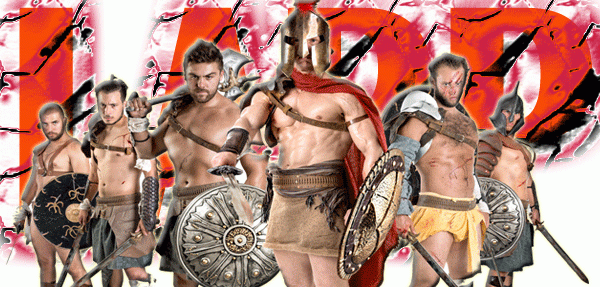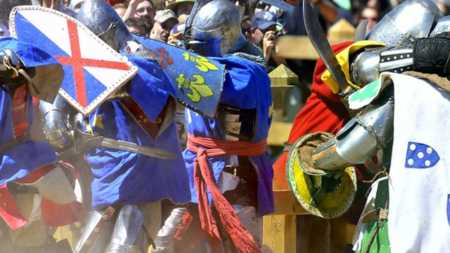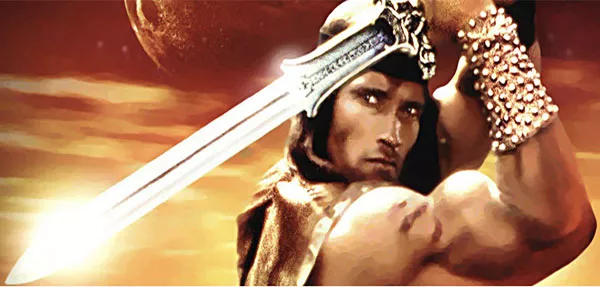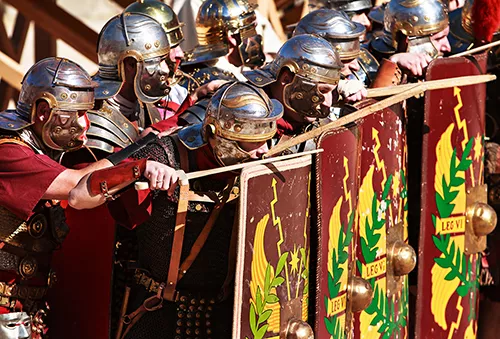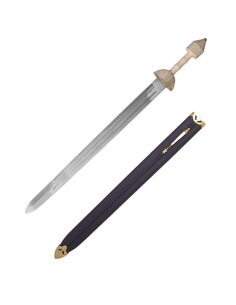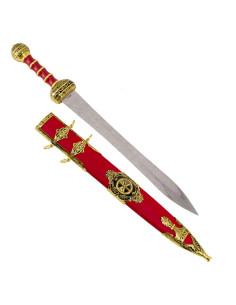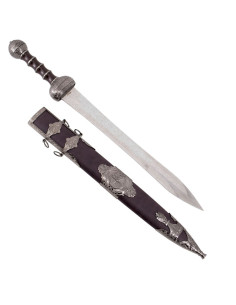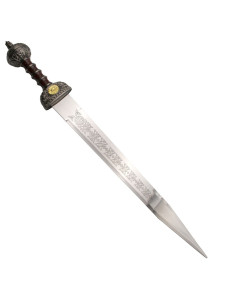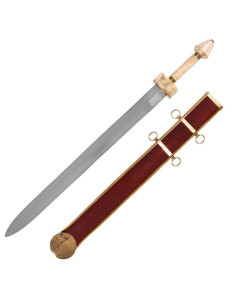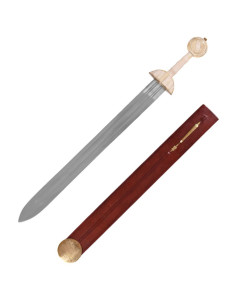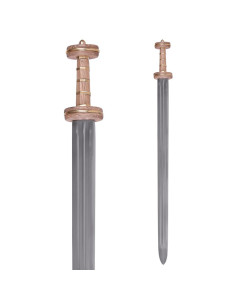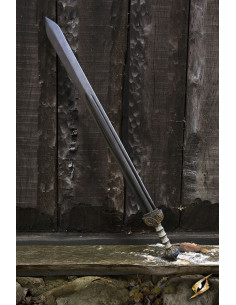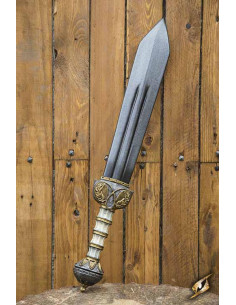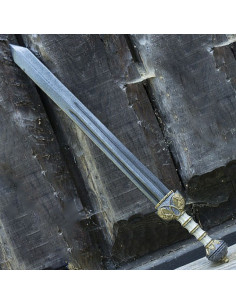spathe
300.00 €
Raise your warrior spirit with the imposing UNofficial Roman Sword of General Maximus! This formidable, though unofficial, weapon is a tribute to the famed general's bravery and skills. Its blade, hand forged in high carbon steel, guarantees exceptional resistance and durability in every battle. The wood and brass hilt is a true work of art, with detailed...
767.72 €
Take your imagination back to ancient Rome with this amazing Spatha type Roman handcrafted sword with scabbard! From VB SwordShop we get this jewel of Hungarian craftsmanship, designed with all the care and precision that characterizes its expert craftsmen. This sword has a bone hilt, which gives you a comfortable and secure grip, allowing you to handle...
127.98 €
Have you ever dreamed of owning an authentic Roman sword from the 4th century AD? Now you can make it a reality with our amazing Spatha Romana replica with scabbard! This magnificent sword is perfect for history lovers and Roman culture enthusiasts. Our Spatha Romana is a true work of art. Every detail has been carefully designed to ensure maximum...
84.98 €
Sword, roman Spatha cavalry, with finishes in antique gold on the pommel the guard and the grip. With a total size 80cm, sheet steel, imitation steel damascus. Includes a black cover, lined in synthetic leather red with details in antique gold.
84.98 €
Sword, roman Spatha cavalry, with finishes in nickel, old in the pommel the guard and the grip. With a total size 80cm, sheet steel, imitation steel damascus. Includes a black cover, lined in imitation leather brown with details in nickel old.
60.97 €
Spatha cavalry roman steel sheet and prints, saves and knob with finishes in nickel and recorded. The holster is black in color with a finish of nickel. Includes support for on-board.
127.98 €
Discover the Roman Spatha with scabbard from the 3rd century AD, an impressive replica of the Roman sword found in Germany. This exceptional piece is not only a treasure for history buffs and collectors, but is also perfect for displaying as a decorative item in your home or workplace. The sword has a carbon steel blade, which guarantees its durability...
111.98 €
Immerse yourself in history with the Roman Spatha with scabbard! This decorative sword perfectly represents the style and splendor of the 3rd century AD. C. Its blade is exquisitely forged in carbon steel, which guarantees its resistance and durability. In addition, its bone handle gives it an authentic and original look. But it's not just a collector's...
127.98 €
Discover the Roman Spatha model Podlodów, S. III, an authentic piece of Roman history that will transport you to the heyday of the Empire. This sword is a faithful reconstruction based on several 3rd-century originals found near Podlodów, in the archaeological region of the Przeworsk culture. The blade of this Spatha is forged from EN45 high carbon steel,...
91.74 €
Are you ready to embark on an epic adventure in ancient Rome? With the 105 cm latex Roman Spatha, you can immerse yourself in the world of live role-playing games, historical re-enactments and much more. Made from high-quality materials, this strong latex-coated fiberglass sword gives you a realistic and safe experience. Its detailed design and balanced...
56.20 €
Epic Armoury's Spatha is a latex hybrid short sword designed for LARP, inspired by the Roman gladius. Measuring 60cm in length, this sword features a double-edged, double-fuller blade, giving it an authentic and powerful look. The hilt of this sword, known as a capulus, features an intricate design indicating the position of an officer or dignitary....
86.78 €
Are you looking for a sword that combines style and resistance? Then the Epic Armory Fibreglass Roman Spatha is perfect for you! This decorated sword is made of fiberglass, a material known for its durability and resistance. The Spatha Romana fiberglass has a length of 85 cm, which makes it a powerful and versatile weapon. One of the advantages of this...

